Understanding the fundamentals of vector graphics and the different vector file format types available is essential for designers, artists, and professionals working with visual content.
We will discuss the advantages and disadvantages of vector graphic formats, highlight their practical applications, and provide insights on selecting the right format for specific needs.
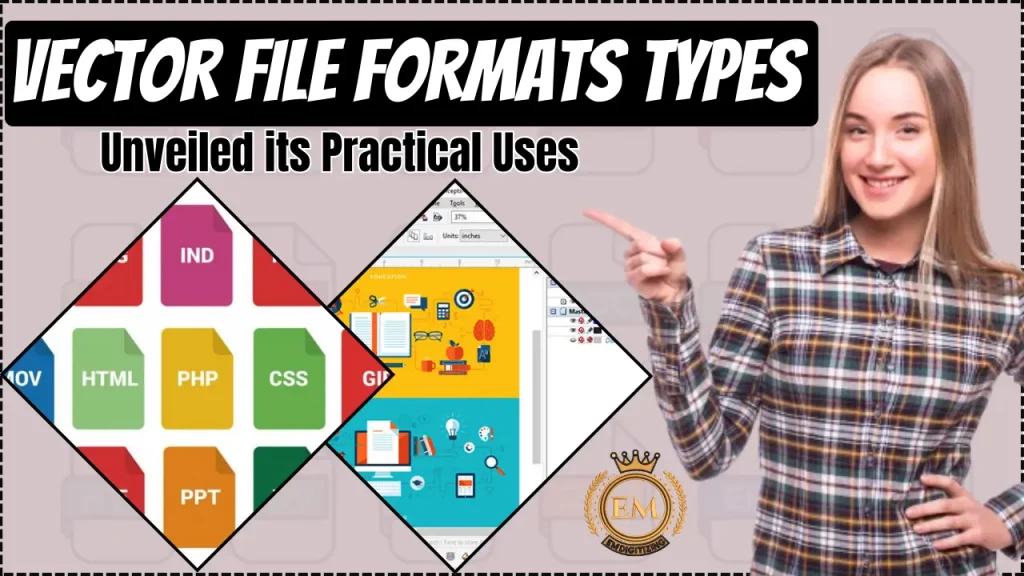
By unraveling the potential of vector formats, we can harness their power to create stunning visuals and streamline workflows.
Vector File Format Types: Unveiled Its Practical Uses
Basics of Vector File Formats
Vector images are made up of lines, shapes, and curves that are defined by mathematical formulas.
The key characteristic of vector graphics is their scalability, which allows them to be resized without compromising on quality. They are ideal for creating crisp and clean illustrations, icons, and logos.
While vector graphics are based on mathematical equations, raster images are composed of a grid of pixels.
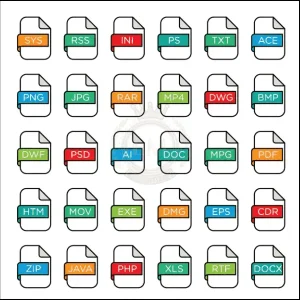
This fundamental difference gives vector graphics their ability to scale infinitely, while raster images tend to lose quality when enlarged. Raster images are better suited for photographs and complex, detailed artwork.
Common Vector File Format Types
There are several popular vector file format types that designers and professionals use to save and exchange vector images. These formats provide compatibility across different software and platforms and ensure the integrity of the vector data.
Let’s take a closer look at some of the most widely used vector file types.
1. Scalable Vector Graphics (SVG)
SVG, the superhero of vector file formats, is an open standard format that works well on the web.
It supports interactivity and animation, making it ideal for website design, icons, and user interfaces. SVG files can be edited using software like Adobe Illustrator, Inkscape, or even a simple text editor.
2. Adobe Illustrator (AI)
The AI file format is specific to Adobe Illustrator, a popular software used for creating vector graphics. AI files contain all the necessary information to preserve the original design, including layers, paths, and colors.
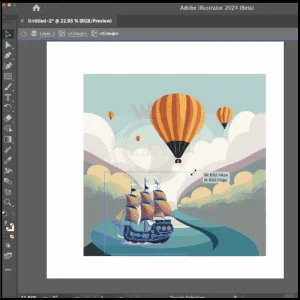
They are widely used in professional design work and can be exported to other formats if needed.
3. Encapsulated PostScript (EPS)
EPS files are versatile and widely supported by different software and devices. Originally developed for printing, EPS files can contain both vector and raster elements.
They are commonly used for logos, illustrations, and graphics that need to be printed at high resolution.
4. Portable Document Format (PDF)
Although PDF files are primarily associated with documents, they can also contain vector graphics.
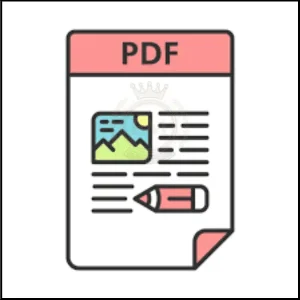
PDF files preserve the integrity of the vector data, making them suitable for sharing and printing. Many design software, including Adobe Illustrator and Inkscape, allow exporting to PDF format.
Advantages and Disadvantages of Vector File Formats
Every file type has its own advantages and disadvantages, let’s discuss them one by one:
Advantages of Vector Graphics
Vector graphics come with a handful of superpowers that make them a favorite among designers and artists.
Scalability
First off, they offer infinite scalability. No matter how big or small you need them, vector graphics can be resized without losing any of their sharpness or quality.

Need a tiny icon for a mobile app? No problem. Want a massive billboard design? Vector graphics have got you covered.
Flexibility
Another advantage of vector graphics is their flexibility. They’re made up of mathematical equations and geometric primitives, which means you can easily adjust and manipulate their shapes, colors, and properties.
Want to change the color of every single element in your design with just one click? Vector graphics can make it happen.
Resolution Independent
Last but not least, vector graphics are resolution-independent. Unlike their pixelated cousins (raster graphics), they won’t blur or lose detail when enlarged.
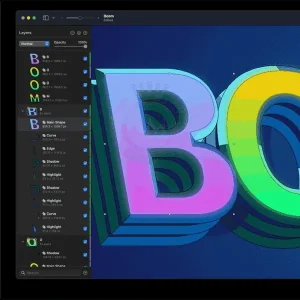
So whether you’re printing a logo on a business card or displaying it on a mega-sized billboard, vector graphics will keep your design looking crisp and clear.
Limitations of Vector File Formats
As with everything in life, vector file formats also have their limitations:
Struggling with Complex Designs
One of the main downsides is that they struggle with representing complex details and textures. Since vector graphics are based on mathematical equations, they excel at simple shapes and solid colors but struggle when it comes to intricate details like gradients, shadows, or textures.
So, if you’re working on a design that heavily relies on these elements, you might want to consider using raster graphics instead.
Compatibility
Another limitation is software compatibility. While vector file formats are widely supported, not all software applications can handle them.
It’s essential to ensure that the programs you’re working with support the specific vector file format you plan to use. Otherwise, you might be in for some compatibility headaches.
Choosing the Right Vector File Format for Your Needs
Factors you need to choose the right vector file according to your needs:
Considerations for Selecting a Vector Format
When it comes to choosing the right vector file format, there are a few things to keep in mind. First and foremost, consider the software or program you’ll be using to work with the files. Different formats may be compatible with certain software, so it’s important to check for compatibility before making your selection.
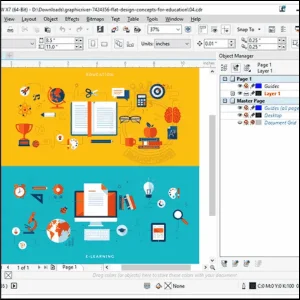
Additionally, think about the intended use of the file. Are you creating a logo that will be printed on various materials, or designing illustrations for a website? The purpose of the file will often determine which format is most suitable.
Lastly, consider the file size and storage requirements. Some vector file formats are more efficient in terms of file size, which can be beneficial if you’re working with limited storage space or need to transfer files quickly.
Compatibility and File Sharing
One of the key considerations when choosing a vector file format is its compatibility with other software and programs. If you’re working in a collaborative environment or need to share files with clients or colleagues, it’s important to choose a format that can be easily opened and edited by others.
Formats like SVG (Scalable Vector Graphics) and PDF (Portable Document Format) are widely supported across different platforms and software, making them great choices for file sharing. They ensure that your designs can be viewed and edited by others without any issues.
Recommended Usage Scenarios for Different Formats
Different vector file formats have their own strengths and are best suited for specific usage scenarios. Here are a few recommendations:
- SVG (Scalable Vector Graphics): Ideal for web design, illustrations, and logos that need to be displayed on various devices and screen sizes. SVG files are lightweight, scalable, and can be easily edited using software like Adobe Illustrator.
- AI (Adobe Illustrator): This format is native to Adobe Illustrator and offers robust editing capabilities. It’s perfect for complex illustrations, typography, and artwork that require precise control over design elements.
- EPS (Encapsulated PostScript): Widely used in print design, EPS files are versatile and maintain high-quality vector graphics even when scaled. They are compatible with most design software and are popular among professional printers.
Remember, these are just a few examples, and there are other formats available depending on your specific needs. It’s always a good idea to research and experiment to find the format that works best for you.
Conclusion
In conclusion, vector file formats offer numerous advantages such as infinite scalability, flexibility, and resolution independence. However, they do have limitations, particularly with complex details and software compatibility.
When choosing a vector file format, consider factors like compatibility and the complexity of your design. Additionally, ensure you follow best practices by planning your design, using grouping and layering, and exporting and saving files with the intended use and compatibility in mind.
By harnessing the power of vector file formats and implementing best practices, you can create stunning designs that can be scaled, manipulated, and shared with ease. So go forth, fellow designers, and let your creativity soar in the realm of vectors!
EMdigitizing: Embroidery Digitizing Expert At Your Service
If you are interested in any kind of embroidery project, then EMdigitizing is the best option for you. We offer embroidery digitizing and vector art services with a fast turnaround time. You can also visit and check our website as well as our best services.
We also offer a great 50% discount on all our services for our respected first-time clients. We also offer free quotes generated in just 5 minutes.
You should grab this limited-time offer and take your embroidery project to the next level with EMdigitizing.
If you’ve any queries regarding this topic, you can ask them. Thank you for taking the time to read this article.
Frequently Asked Questions:
Common vector file formats include SVG (Scalable Vector Graphics), AI (Adobe Illustrator), EPS (Encapsulated PostScript), and PDF (Portable Document Format).
There’s no single “best” vector file format; it depends on the use case. SVG is widely used for web due to its scalability and small size, while AI is preferred for detailed graphic design work.
A raw vector file refers to an unprocessed vector file, typically in the format it was originally created in, such as AI or EPS, containing all the original design elements and layers.
Vector files are generally not heavy. They contain mathematical descriptions of shapes and lines, which usually take up less space than bitmap images, especially for simpler designs.
Vector files are better for applications requiring scalability (like logos or print media) without loss of quality. They are not inherently better than raster images but serve different purposes.
